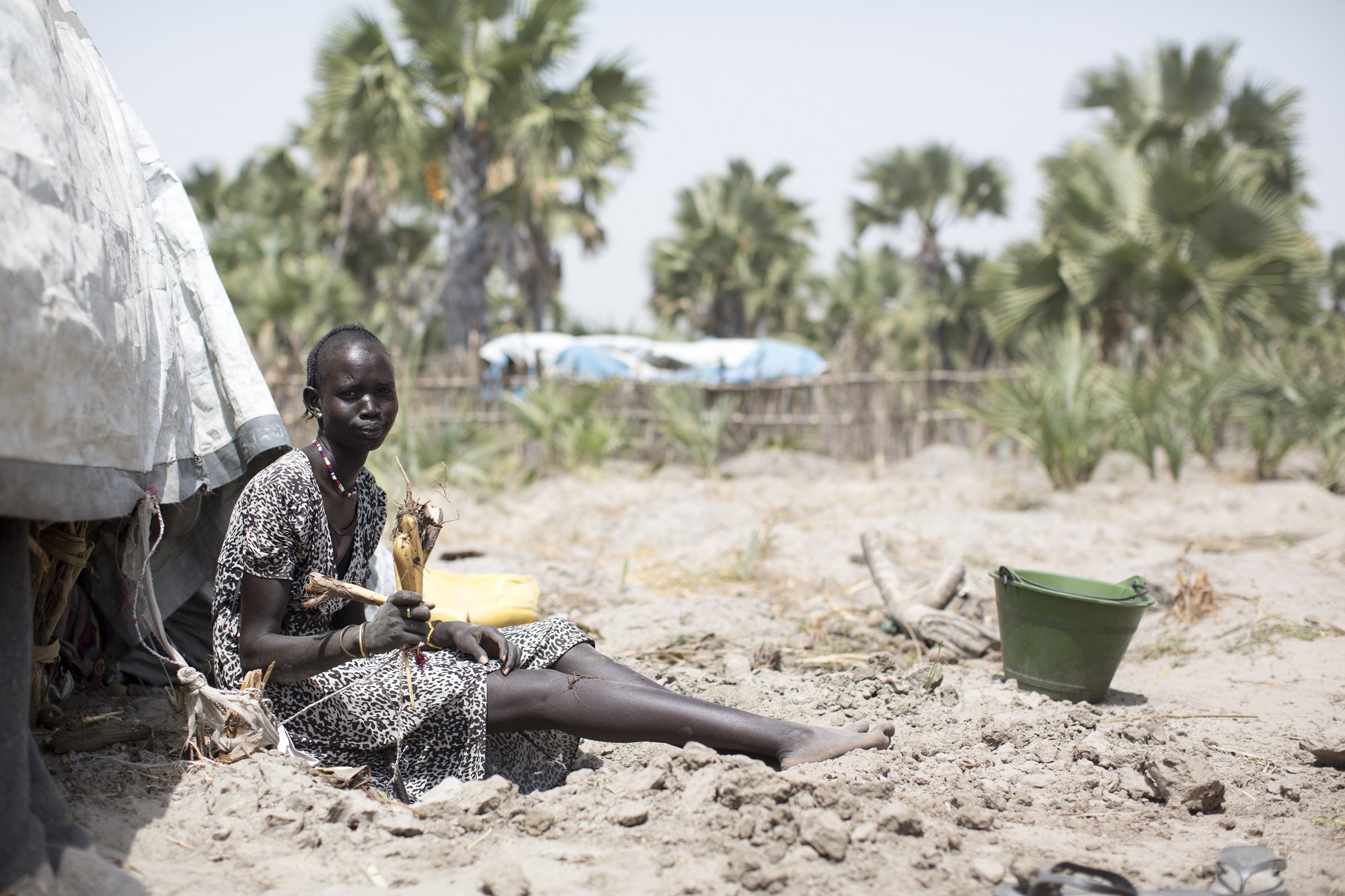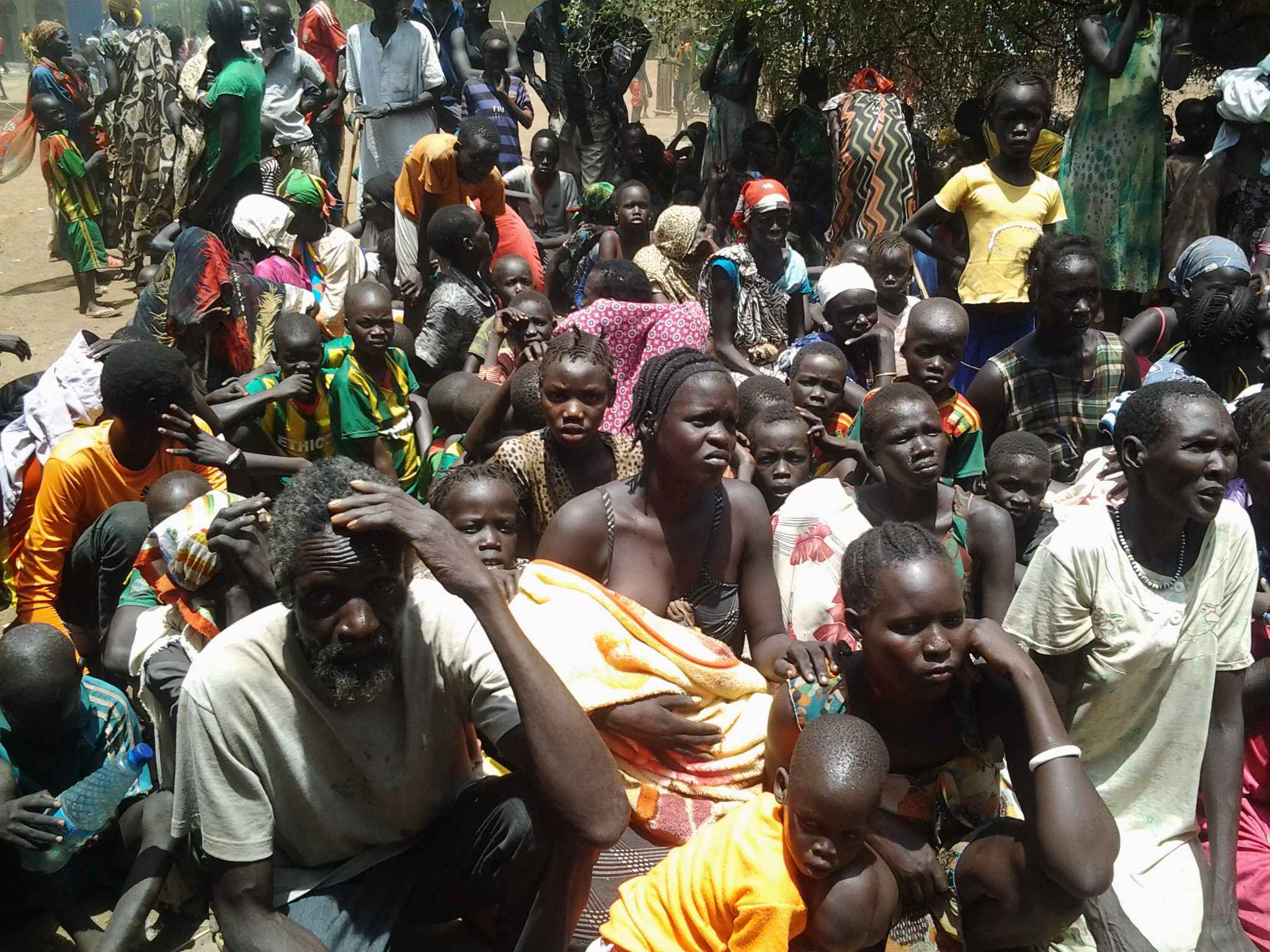Modern technology helps meet the needs of refugees in South Sudan
Modern technology helps meet the needs of refugees in South Sudan

YIDA, South Sudan, Dec 27 (UNHCR) - Technology is changing all spheres of life, including humanitarian interventions. In South Sudan, UNHCR is using satellite imagery, interactive mapping, digital fingerprinting and text messaging to strengthen refugee protection, help the most vulnerable and reach out to refugees in urban areas.
UNHCR is conducting the first biometric registration exercise in South Sudan using digital fingerprinting technology. The nearly 200,000 refugees had been registered in standard databases, but biometrics will help to identify refugees more quickly so they can receive better assistance.
In Yida refugee settlement, the largest in South Sudan with more than 65,000 refugees, biometrics is a critical way for UNHCR to target services, to prevent multiple registrations and make planning and delivery more efficient.
As Yida is very close to the border, it is not unusual for refugees to risk their lives by returning home to escort other family members to safety. The movements make maintaining accurate population figures for Yida a challenge for UNHCR.
Precise registration also facilitates individual follow-up for the most vulnerable refugees, like Housna Ali Kuku*, a single mother of four children who arrived in Yida in late July. An information campaign in Yida told Housna exactly when to bring her children to the UNHCR registration center.
"I'm recovering from a respiratory tract infection and even though I am sick and tired I know it's important for my children and I to come to UNHCR to be counted," she told UNHCR. Housna's children are not aware of UNHCR's hi-tech endeavours. One by one they are being registered and watch with fascination as the registration clerk rolls their index fingers to capture each child's unique print on the machine's red light sensor screen.
UNHCR is simultaneously using the process to update information on special needs such as female-headed households, pregnant or lactating women, or malnourished children. In this way protection staff can quickly identify and meet the needs of the most vulnerable in a camp made up of more than 70 percent women and children.
The team is also recording a new piece of data: the refugees' addresses. UNHCR has recently been working with its NGO partner ACTED to take GPS coordinates to map Yida settlement. Each structure or tent is being entered into the map.
Maps and addresses are linked to UNHCR's database, providing a wealth of information through interactive technology. These newly designed interactive maps enable humanitarian workers to find out much more about the camp population than the location of each shelter as the data base links up geographic and demographic data down to household level.
"Now, mapping a problem is just a mouse click away," says Emilie Poisson, ACTED Country Director for South Sudan.
"Let me give you an example: previously, if the clinic noted an increase in patients with a certain disease all we had were the absolute figures. Now, we can detect the causes by analyzing the map. Does the disease spread in a certain community, around a specific latrine, in families with school children? Such information helps us to intervene faster and in a more targeted way," says Poisson.
With the help of interactive maps, services for the most vulnerable refugees can be improved. Where are the older and sick people located? How far do they have to go to get water, reach a clinic or carry food from delivery points? Have relief items been distributed to all households? Are children from certain camp areas under-represented in camp schools?
A completely different set of problems presented itself in Juba, where over 6,000 refugees are scattered across the sprawling capital. They need protection and support, but the largest challenge for UNHCR has been communication. Again, technology provided a solution.
UNHCR established contacts with community leaders, who in turn were trying to reach their communities by phone or personal visits. The method is costly and time consuming for refugee leaders and does not give UNHCR direct access to beneficiaries. During a recent registration exercise it was noted that practically all refugees had either a mobile phone or access to a mobile phone through a person nearby.
UNHCR protection and IT officers engaged with a mobile phone provider who now is installing a text-messaging platform for UNHCR. The refugees' phone numbers have been entered in the database and structured by geographic areas. UNHCR can now reach out to all or to certain groups of refugees in multiple languages at the same time.
"The system will be fully functional in a matter of days," says UNHCR community services officer Alfonso Masso. "This will even allow us to organize democratic community leader elections." UNHCR will send step-by-step instructions in Arabic and English to all refugees and guide them through the process - from the selection of candidates all the way to forming a leadership committee."
* Name changed for protection reasons.
By Melita H. Sunjic in Juba and Kathryn Mahoney in Yida








